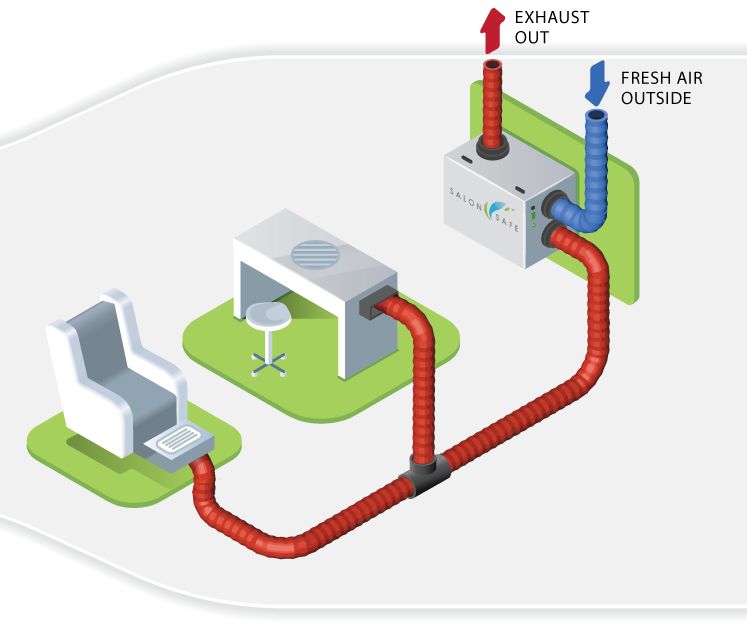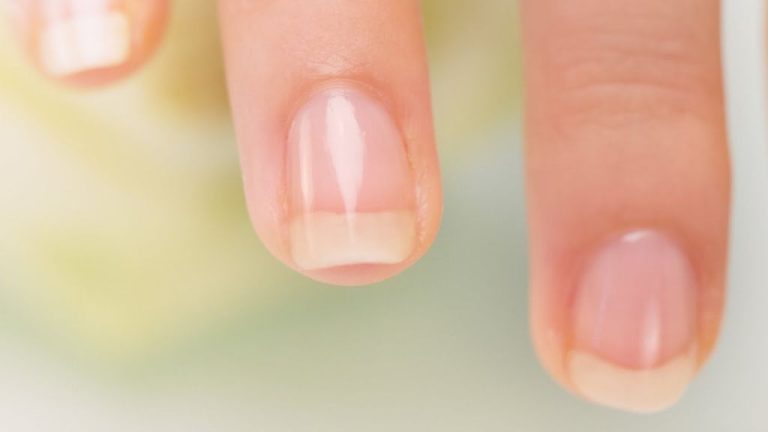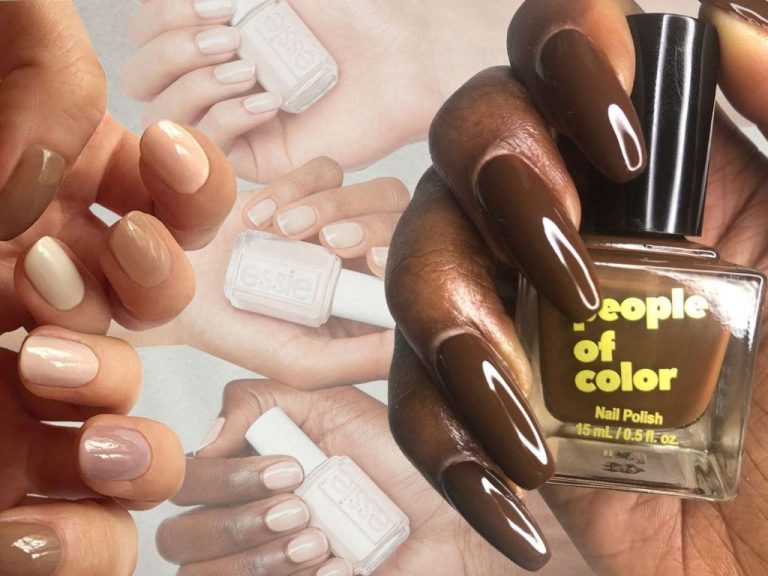The Eco-Friendly Nail Salon: Promoting Green Beauty Practices
Eco-friendly nail salons promote sustainable practices by using non-toxic nail polish and other products that don’t contain harmful chemicals like formaldehyde, toluene, and dibutyl phthalate (DBP). These salons aim to reduce their environmental impact through energy and water conservation, recycling programs, and educating staff and clients on green beauty practices. An eco-friendly salon prioritizes the health of its technicians and patrons over using potentially toxic ingredients found in regular nail polish and products.
As described by Greentoes Tucson, “Eco-friendly nail salons use nail polish free of the ‘toxic trio’ and other harmful ingredients like parabens and sulfates. They focus on natural nail care and treatments made with plant-based ingredients whenever possible” (https://www.greentoestucson.com/eco-friendly-nail-salons/). These salons promote sustainability in all aspects of their business.
Use of Toxic Chemicals
Many common chemicals used in nail salons have been known to have negative health effects for nail technicians. According to OSHA, the “toxic trio” of chemicals in nail products that are particularly hazardous include toluene, formaldehyde, and dibutyl phthalate (OSHA). Toluene is found in nail polishes and glues, and exposure can cause headaches, dizziness, and impaired cognitive function. Formaldehyde is used in some nail polishes and hardeners and is a known carcinogen. Dibutyl phthalate is used in nail polishes and can cause endocrine disruption. According to research, nail salon workers inhale chemicals at levels 10 times higher than e-waste workers, which has been linked to serious health issues like cancer, kidney disease, and miscarriages (Forbes).
Prolonged exposure to these chemicals day after day in inadequately ventilated salons can lead to both short and long-term health effects for workers including asthma, skin irritation, headaches, nausea, and reproductive issues. Using safer nail products and improving salon ventilation can help reduce these health risks.
Going Green with Products
One of the biggest ways nail salons can go green is by using natural and non-toxic nail products. Traditional nail polishes often contain toxic chemicals like formaldehyde, toluene, and dibutyl phthalate (DBP). These ingredients have been linked to cancer, reproductive issues, respiratory problems and more (source). Thankfully, there are now many options for natural nail polishes made without these harmful ingredients.
Brands like 100% Pure, Sundays, and NCLA make non-toxic nail polishes using natural ingredients like bamboo, flowers, and vitamins. These polishes are free of the “toxic trio” and other harsh chemicals, providing a safer option for technicians and clients (source). Natural nail polishes offer the same quality, durability, and color options as traditional polishes. Many clients appreciate and seek out these healthier nail products.
Nail polish removers can also contain acetone, formaldehyde, and other volatile organic compounds (VOCs). Natural acetone-free removers use plant oils, vitamins, and other safer ingredients to effectively remove polish and nourish nails. Brands like Karma Organic Spa and Acquarella offer non-toxic alternatives (source).
By switching to natural nail products free of harsh chemicals, salons can greatly reduce their environmental footprint and exposure risks. This change benefits the health of clients, staff, and the planet.
Ventilation Systems

Proper ventilation is critical for improving indoor air quality in a nail salon. The chemicals used in nail products contain volatile organic compounds (VOCs) that can be harmful when inhaled over time. Studies show that inadequate ventilation contributes to health issues like headaches, respiratory irritation, and nausea among nail technicians.1
Ventilation helps remove chemical vapors, dust, and other contaminants from the salon’s air. The two main types are general ventilation and local exhaust ventilation. General ventilation circulates fresh air throughout the salon using fans or an HVAC system. Local exhaust ventilation captures contaminants directly from the source using vents, ductwork, and an exhaust fan.
For nail salons, local exhaust is recommended since it’s more effective at removing VOC vapors. Positioning vents near workstations where technicians use nail products helps prevent exposure. Outdoor air venting is ideal, exhausting contaminated air outside rather than recirculating it. Proper installation and regular maintenance of ventilation systems is key for ongoing healthy air quality.2
Saving Water
Nail salons use a significant amount of water during services for cleaning tools, rinsing hands, and more. There are many ways salons can reduce their water usage and conserve this precious resource.
Installing low-flow water fixtures such as aerators on sink faucets is an easy way to cut back on water waste. Aerators efficiently mix air into the water stream while maintaining wetting effectiveness, reducing water use by 30% or more without sacrificing performance [1]. Upgrading to water efficient toilets and urinals with low-flush or dual-flush technology can also lead to major water savings.
Staff should be trained on ways to reduce water usage like turning off taps while not in active use and reporting any leaks immediately. Simple habit changes like using a spray bottle for rinsing hands instead of running water can also make a difference.
Some innovative salons are trying waterless manicure and pedicure systems that use disposable liners instead of soaking feet and tools in water baths. This radically reduces water use, saving thousands of gallons per year [2]. While the liners do produce waste, the overall environmental impact may be lowered through drastic water reductions.
Recycling and Reducing Waste
Nail salons generate a significant amount of waste from nail clippings, cotton balls, nail files, paper towels, plastic gloves, and empty nail polish bottles. Implementing a recycling program can help divert this waste from landfills. Many salons partner with recycling companies like GLO Recycling that provide labeled recycling bins and pick up the waste on a regular schedule.
Salons should have clearly labeled recycling bins throughout the workspace to collect paper, plastic, glass, and aluminum. Nail clippings and cotton balls with acetone can go in a medical waste container. Nail files should be recycled with metals. Some salons even send used nail files back to the manufacturer for recycling.
Using reusable tools and supplies instead of disposable ones can also cut down on waste. Washable nail files, metal nail clippers, and refillable glass nail polish bottles are excellent swap-outs. Cloth towels and headbands can replace paper towels and disposable hair caps.
Energy Efficiency
One of the best ways for nail salons to become more eco-friendly is by improving their energy efficiency. This not only helps the environment, but can also lead to major cost savings. According to The Shocking Truth About Energy in the Salon, investing in energy-efficient lighting, heating, ventilation, appliances, and water systems can significantly reduce a salon’s energy usage.
For lighting, LED bulbs should be used instead of incandescents. LEDs use at least 75% less energy and last 25 times longer. Occupancy sensors, dimmers, and daylight harvesting can also help reduce lighting electricity usage. Replacing old appliances and HVAC systems with ENERGY STAR certified ones will cut down on energy waste. Smart thermostats allow temperature optimization when the salon is empty. Furthermore, heat recovery ventilation like energy recovery ventilators can simultaneously enhance indoor air quality while capturing wasted heating and cooling, as explained in this article.
Sustainable Salon Design
Creating an eco-friendly nail salon starts with the design and materials used in the physical space. Choosing sustainable building materials like recycled glass tiles, reclaimed wood floors, and low-VOC paints promotes green practices.
Incorporating plenty of natural light through ample windows or skylights reduces the need for artificial lighting. Installation of solar panels also allows nail salons to utilize clean energy.
Indoor plants not only provide a soothing, spa-like ambiance, but also improve air quality and naturally filter pollutants. Strategically placing plants helps absorb toxic chemicals and refresh stale salon air.
Other green design elements include low-flow water fixtures, energy efficient HVAC systems, and purchasing secondhand furniture and decor whenever possible. Investing in sustainable design significantly reduces the environmental impact of nail salons.
According to research, eco-conscious clients increasingly prefer and reward businesses with visibly green interiors (Source).
Educating Clients
Many nail salon clients are unaware of the unhealthy chemicals commonly used in standard nail care services. By educating your customers on the benefits of green nail care products and practices, you can gain their support in your sustainability efforts. According to Scratch Magazine, promoting your green salon to clients can result in extra revenue, new and retained clients, and positive PR and media coverage.
Consider displaying informational brochures and signage that explain the toxins found in regular nail polishes, gels, and other products. Share how your salon uses non-toxic alternatives that are safer for technicians and customers. You can even host special events to promote your green mission and give clients gift bags with product samples and coupons. When clients understand the health and environmental benefits of your sustainable practices, they will be more likely to support your salon and appreciate your efforts.
Certifications
There are a number of eco-labels and certifications that nail salons can obtain to demonstrate their commitment to sustainability. Some popular options include:
Green Circle Salons Certification – Green Circle Salons is a certification program that helps salons implement sustainable practices to reduce their environmental impact. Certified salons commit to recycling, using eco-friendly products, and educating staff and clients.
EPA Safer Choice – The EPA’s Safer Choice label indicates that products contain safer chemical ingredients. Many nail polish brands now carry polishes and removers with the Safer Choice label.
SAFE Salon Certification – SAFE (Salon And Facility Eco-Certification) is a certification program specifically for salons seeking to use safer products and implement greener practices. It covers waste reduction, energy/water conservation, and more.
Leaping Bunny Certification – The Leaping Bunny label signifies that cosmetic and personal care products are cruelty-free and not tested on animals. Many eco-friendly nail polish brands have obtained Leaping Bunny certification.
Organic Certifications – Products certified organic by the USDA, European Soil Association, or other agencies indicate that ingredients were grown without synthetic pesticides or fertilizers.





